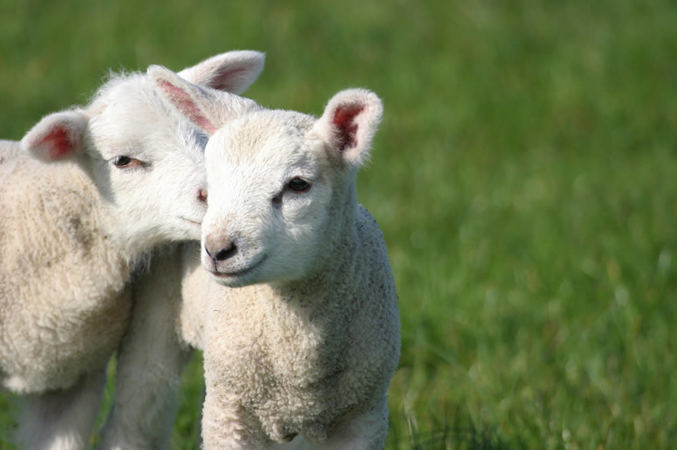Back in 1950, chicken was eaten as a treat; British people ate less than a kilo in a whole year. Now, we eat on average 25kg in a year - that's more than 2 kg per month.
Live fast, die young
Broilers (chickens farmed for meat) have been bred to grow bigger and faster. Chickens can live for six or more years under natural conditions. However those used in intensive farming will commonly be slaughtered before they reach six weeks old.
Free-range broilers will usually be slaughtered at 8 weeks old and organic broilers at around 12 weeks old.
There are a number of welfare issues for broiler chickens.
Welfare issues for broiler chickens
Good animal welfare depends on three components:
- Physical well-being
- Mental well-being
- Natural living.
In intensive chicken farms all three of these are compromised by overcrowding in filthy conditions, barren environments, and rapid growth. Chickens also suffer injury and stress through rough handling during catching, transport and slaughter.
Over 70% of chickens raised for meat globally are raised in intensive industrial farming systems. This includes the majority of chickens in the UK, Europe, the US and China, as well as rapidly increasing numbers in developing countries.
In the European Union, intensively farmed chickens are bred to reach their slaughter weight in less than 6 weeks. This is less than half the time it would take traditionally. Their short lives are spent in overcrowded, dimly-lit sheds with no access to the outside.
Inside the intensive chicken shed
In the chicken shed
Generally, broiler sheds are barren except for water and food points, with no natural light. There is litter on the floor to absorb droppings but this is not cleaned out until the chickens have been removed from the shed for slaughter.
The air can become highly polluted with ammonia from the droppings. This can damage the chickens’ eyes and respiratory systems and can cause painful burns on their legs (called 'hock burns'), chests and feet.
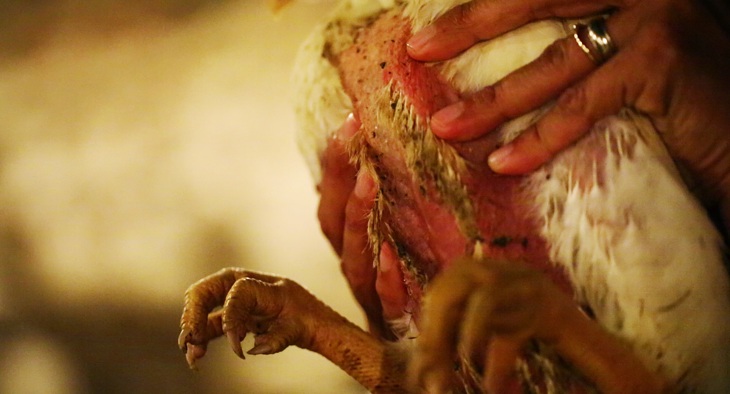
Chickens confined in these barren sheds are not able to adjust their environment to avoid heat, cold or dirt as they would in natural conditions.
It can get very hot inside the sheds, especially in summer. If the ventilation system fails, thousands of birds can die of heat stress.
Fast growth
Intensively reared chickens have been bred over the last few decades to grow very quickly. But there are huge welfare costs to this increased growth rate. They spend much of their time lying down because their legs are not strong enough to support their heavy body weights and many of them suffer from painful leg disorders.
The rapid growth also puts a strain on their hearts and lungs, they suffer from fatigue and do not have much energy for exercise. Fast-growing broilers spend less time performing natural behaviours such as walking, pecking, scratching the litter and perching, and more time sitting and eating, than slower-growing breeds. In the UK alone, millions of chickens die in their sheds from heart attacks each year.
Lame chicken
This footage shows potentially upsetting scenes of animal suffering.
Overcrowding
Tens of thousands of birds can be housed in each shed. The 2007 EU Directive on broiler chickens allows the equivalent of around 19 birds per square metre, depending on their weight at slaughter. This means that each bird has less floor space than the size of an A4 sheet of paper.

Chickens in overcrowded sheds have very little space for exercise and are disturbed or trodden on when they are resting. As they grow, they have less and less space to move and find it more difficult to reach food and drink if they are lame. Crowding is also likely to lead to more air pollution, increased heat stress and foul litter.
Feed restriction of breeders
The fast growth of broilers is accompanied by an increased appetite. Although the majority of broilers are killed for meat as juveniles, some are kept for longer to be used for breeding. Due to the health problems associated with fast growth, chickens used for breeding are kept on very restricted diets. They suffer from stress, frustration and chronic hunger as a result.
Catching, transport and slaughter
Before transport to slaughter, broilers are usually deprived of food for many hours, leaving them stressed and hungry. Catching, crating and transport are stressful and can result in bruising and broken bones. Broilers are either caught by hand by a team of catchers, or are picked up using a catching machine. Around 20 million chickens per year are already dead by the time they arrive at EU slaughterhouses.
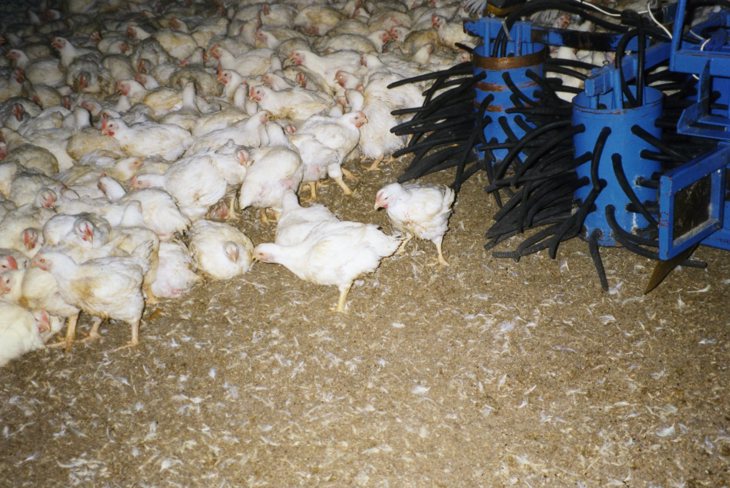
At the slaughterhouse, chickens are typically hung by their feet on shackles whilst conscious, which is likely to be painful, particularly as leg problems are common. The birds are usually stunned by being dipped, head first, into an electrified water bath before their throats are cut. This stunning is sometimes ineffective: the struggling birds may raise their heads and miss the water, resulting in fully conscious birds having their throats cut.
There are more humane alternatives to intensive chicken farming.
Higher welfare chicken farming
The following systems offer significantly higher welfare for meat chickens.
Higher welfare indoor
Some higher welfare systems keep chickens indoors but give them more space (around 12 to 14 birds per square metre) than intensive systems. They also have a richer environment: including natural light and straw bales to encourage natural behaviour like foraging and perching.
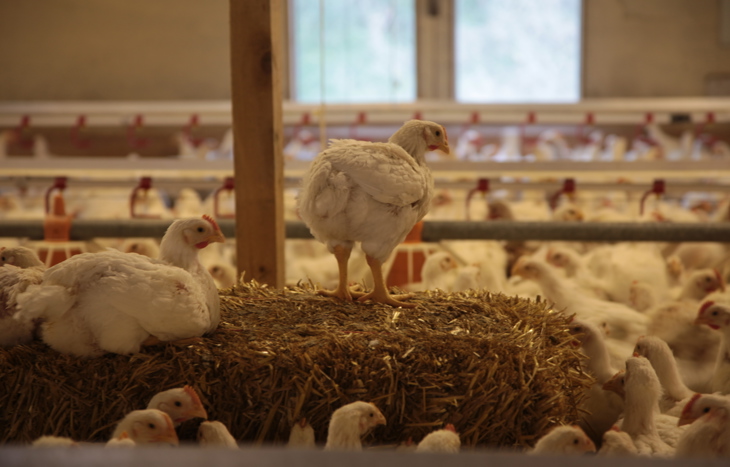
RSPCA Freedom Food has the same requirements as other higher-welfare indoor systems but uses a breed that grows more slowly than intensively reared chickens, which is better for their well-being.
Farming systems with outdoor access
Free-range and organic chickens have access to fresh air and green spaces. The environment can be improved by adding trees and shrubs for cover and shelter.
Free to range
Standard free-range
In these systems, the chickens are given continuous daytime access (for at least half of their life) to an outdoor range during the daytime and or can go inside the sheds where they are housed at night. In the EU, each chicken must have one square metre of outdoor space. Free-range chickens grow more slowly than intensively reared chickens. They also live longer, at least 56 days.
The benefits are a reduced growth rate and opportunities for natural behaviour such as pecking, scratching, foraging and exercise outdoors, as well as fresh air and daylight. Because they grow slower and have opportunities for exercise free-range chickens have better leg and heart health and a much higher quality of life.
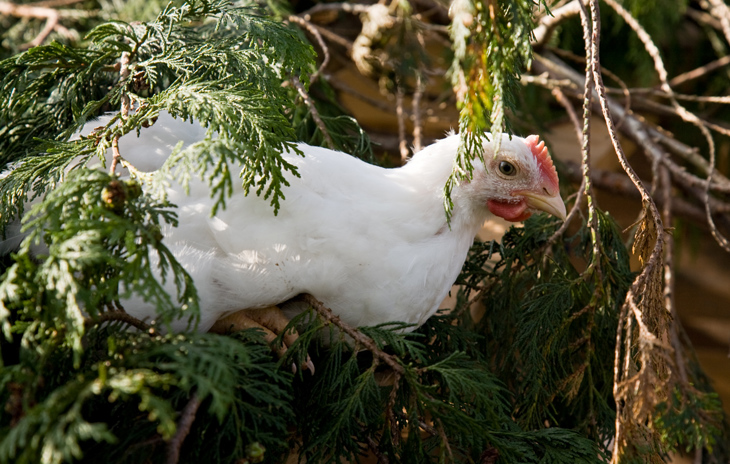
Organic
In organic systems, chickens have outdoor access for at least a third of their life, and a larger space allowance outside (at least 4 square metres) than in free range systems. Organic chickens are slower growing, and more traditional breeds are often used. They commonly grow at half the rate of chickens on intensive farms and live for at least 70 days before slaughter.
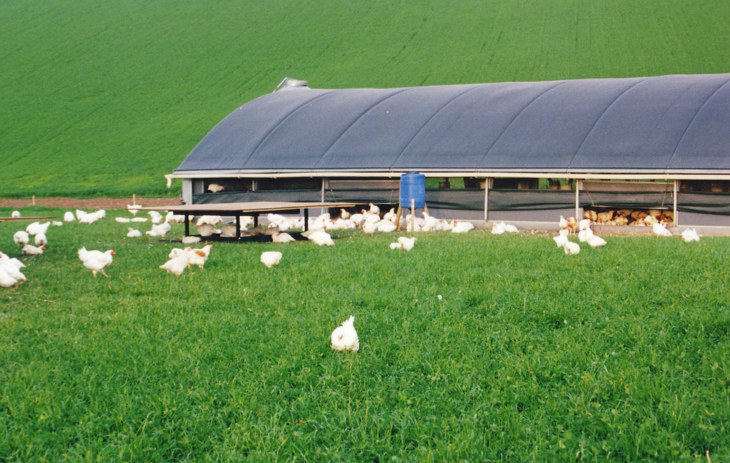
Better Chicken
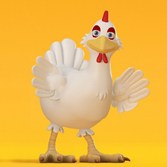
Are you choosing Happy Chickens? Next time you pop some chicken in your trolley, it’s worth considering the kind of life it’s had. You can find out more about Better Chicken here.
